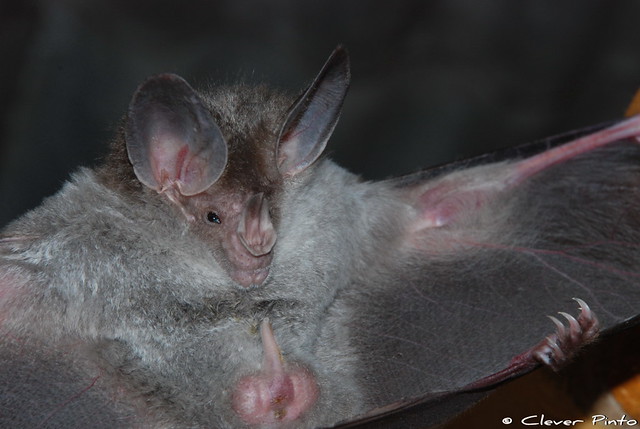Chrotopterus auritus Cladus: Eukaryota Name Chrotopterus auritus Peters, 1856 Type locality: Mexico. Synonyms australis Thomas, 1905
Peters, 1856. Abhandl. Akad. Wiss. Berlin, 1856: 305.
Veracruz (Mexico) south to the Guianas
The Big-eared Woolly Bat (or (Peter's) Woolly False Vampire Bat), Chrotopterus auritus, is a bat species native to Central and South America, where it is found from southern Mexico to northern Argentina, Paraguay and southern Brazil. It is monotypic within its genus. They are large predatory bats, the second largest bat species in the neotropics, and feed on fruits, beetles, moths, lizards, small mammals (including opossums and rodents), birds (including passerine birds) and other bat species. They can take prey of up to 70 g weight, but usually feed on smaller vertebrates of 10 to 35 g. This bat species lives in warm subtropical forests, usually roosting in caves and hollow logs where they, sometimes, bring their prey to eat. Sometimes they cannot be found in disturbed forests. Big-eared Woolly Bats fly slowly, partially because of their size, flying at 1 or 2 meters above ground and usually in dense thickets. They give birth to a single young after a gestation period of more than 100 days. Colonies size vary between one to seven individuals, consisting of a male-female adult pair and young(s). References Chiroptera Specialist Group 1996. Chrotopterus auritus. 2008 IUCN Red List of Threatened Species. Downloaded on 26 October 2008. Source: Wikipedia, Wikispecies: All text is available under the terms of the GNU Free Documentation License |
|


